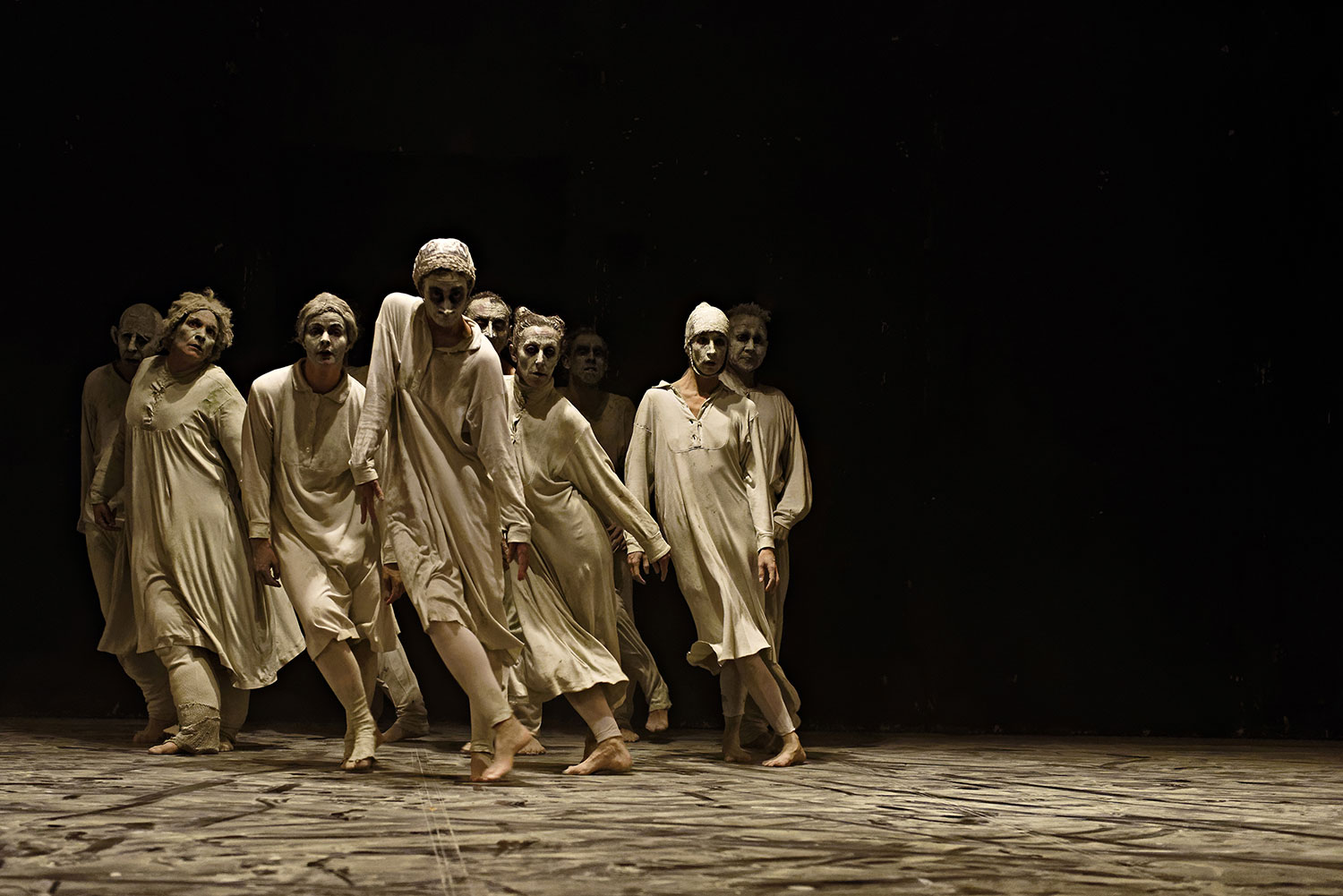Samuel Beckett was notoriously reluctant to let people muck about with his work, so it’s somewhat surprising to learn that he licensed and approved Maguy Marin’s May B. This 90-minute ‘dance theatre’ fantasia may play on vaguely Beckettian themes but in no way is it faithful to his texts or instructions – in some respects it even subverts them. Yet it has enjoyed huge success all over Europe since its première in 1982, and finally reached Britain last week. A long wait, for something that turns out to be very odd indeed.
Ten dancers of all shapes and sizes in grotesque make-up and dressed in chalky, tatty underclothes stand immobile as light slowly grows out of the darkness to the sound of Fischer-Dieskau singing the doom-laden final song from Winterreise. A whistle blows and they begin to huddle, moving first with painful slowness accompanied by animal grunting, then with an explosion of carnival energy that turns nasty. After some half-hearted hanky-panky, everyone ritually removes their shoes. After about 40 minutes of this sort of thing, figures more specifically familiar from Beckett’s plays appear – Vladimir, Estragon and blind Pozzo from Waiting for Godot, Clov and blind Hamm from Endgame. They don’t do much beyond staring passively out at the audience, as we hear Kathleen Ferrier singing more solemn Schubert. At this point in the proceedings, the tension sags.
The last half hour grows out of a recording of Gavin Bryars’s ‘Jesus’ Blood Never Failed Me Yet’. This repetitive threnody of an old hobo provides music for a sequence in which a ragtag of refugees tentatively escape from the stage through the auditorium, leaving only a single figure, seemingly trapped mid-motion, who announces ‘C’est fini’ as the lights slowly fade. The audience was baffled, but not bored: Marin has made haunting tragicomedy out of this parade, evoking something of the melancholy clowning of Buster Keaton, a genius greatly admired by Beckett, mixed with something of the absurdism of Pina Bausch. I’m sceptical of Marin’s pretentious claim in the programme that ‘the dance’s power comes from its capacity to represent the mystery of our presence in the world’, but what she has devised is certainly arresting and memorable.
Stone Nest is the name newly given to a hideous Victorian Presbyterian chapel abutting Shaftesbury Avenue, now promisingly repurposed as an arts venue after ingloriously morphing into a louche club. To an audience seated round the circumference of its domed central chamber, Rambert presented Analogue, a 50-minute work by the Canadian choreographer Jill Johnson, formerly a dancer with William Forsythe’s defunct Ballett Frankfurt, once the troupe with the sharpest edge in Europe. Johnson’s austere style is marked by Forsythe’s influence. Fourteen dancers in neutral black trousers and white shirts reel round in kaleidoscopic circles, sometimes like zombies, sometimes in panic, sometimes in unison, sometimes fragmented. The pace quickens and slackens and the chain periodically breaks into random groupings that mirror each other, but the confrontations seem meaningless and momentary – nobody connects, relates or assumes any humane individuality.
Like Forsythe’s Eidos:Telos and McGregor’s Infra, this seems to be a meditation on urban anomie, the lonely crowd, and it has a cumulative power. Regrettably, it’s accompanied by one of those vacuous minimalist scores that seems to be de rigueur – why bother with a human composer, why not just let AI provide a roll of aural wallpaper gratis? – but Johnson’s concept is strong and Rambert’s dancers are so impeccably assured that one’s attention is held fast.








Comments